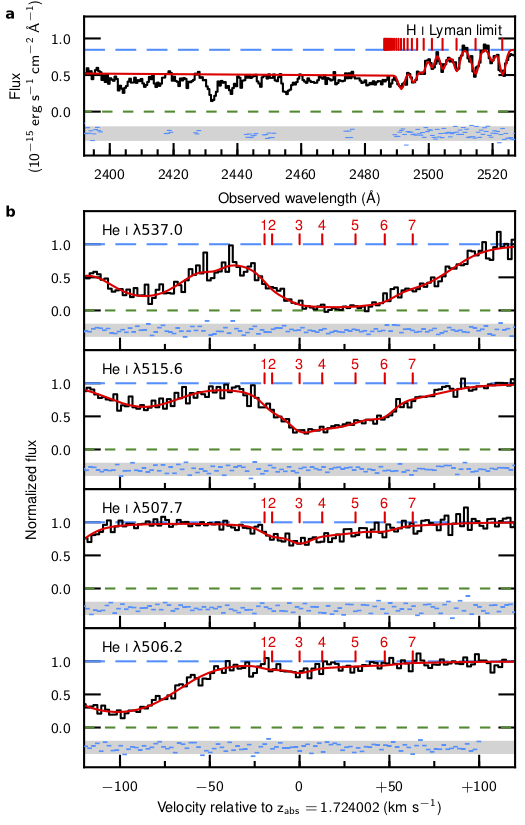CEA News, October 2018
A measurement of the primordial helium abundance from the Intergalactic Medium
 A few minutes after the Big Bang, a brief period of element
creation (known as Big Bang Nucleosynthesis) produced almost all
of the hydrogen and helium in the Universe. The amount of helium
and hydrogen made during the early Universe is sensitive to
cosmology and particle physics. Any deviation from the Standard
Model of particle physics and cosmology would result in a non-
standard production of helium relative to hydrogen.
A few minutes after the Big Bang, a brief period of element
creation (known as Big Bang Nucleosynthesis) produced almost all
of the hydrogen and helium in the Universe. The amount of helium
and hydrogen made during the early Universe is sensitive to
cosmology and particle physics. Any deviation from the Standard
Model of particle physics and cosmology would result in a non-
standard production of helium relative to hydrogen.
The current state-of-the-art measurement of the primordial helium abundance is based on relative strengths of the hydrogen and helium emission lines that are emitted by star-forming regions in nearby metal-poor galaxies.
Durham astronomers have recently reported the first determination of the primordial helium abundance based on a near-pristine intergalactic gas cloud that is seen in absorption against the light of a background quasar. The figure shows the absorption profiles from the hydrogen Lyman Limit (top panel) and a selection of neutral helium absorption lines (remaining panels). The red curves show a model fit to the data (black histogram), and the tick marks above each spectrum indicates the locations of the absorbing gas clouds that comprise the absorption line system. This gas cloud is located at a redshift z=1.724 (i.e. when the Universe was just one-third of its present age), has a metal content 100 times less than the Sun, and contains 30 per cent fewer metals than the most metal-poor H II region currently known where a determination of the primordial helium abundance is afforded. Since the primordial helium abundance offers a sensitive test of new physics beyond the Standard Model just a few minutes after the Big Bang, its determination is of acute interest in cosmology. This study reports a 10 per cent measure that agrees with the Standard Model value.
